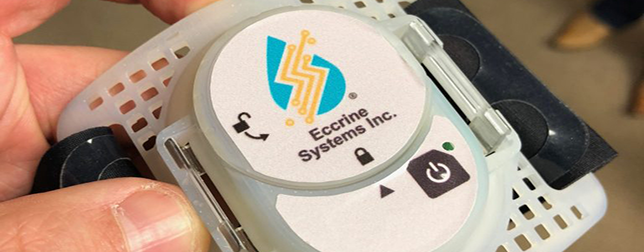Sweatronics is a wearable device developed by Cincinnati-based startup Eccrine Systems that monitors your health using sweat.
Biofluids like blood and urine, contain a wealth of information about our health, but they require diuretics or sharp needles to be collected in useful quantities. No sweat, says Sweatronics. The device samples a biofluid that we all produce continuously while awake or even sleeping – sweat!
While sweat monitoring is typically needed for health factors such as electrolyte balance and hydration, this biofluid is actually full of proteins, hormones, and ions.
Each individual’s sweat composition profile is unique. In a recent SUNY Albany study, researchers recruited 25 volunteers for sweat analysis. The results showed that all 25 individuals could be differentiated from one another due to the unique metabolite levels in their sweat.
Read more Sweat-Based Wearable Sensor May Soon Replace Blood Tests
“If you have two fingerprints or sweat spots on the crime scene, then we can distinguish is it the same person or two different people,” said Jan Halámek, chemist and co-author of the study paper. Investigators could use this information to potentially determine how many separate individuals were present at a particular scene.
The wide variety of biomarkers contained in sweat opens up new opportunities for health monitoring applications such as fertility, stress, metabolism, infections etc.

The Sweatronics system started as a project for the United States Air Force. The system consists of a module worn around the arm. The module consists of a sweat collection unit that makes contact with the skin, as well as the integrated sensor and electronics.
The device is constructed in such a way that it not only effectively collects small amounts of fluid, but also isolate the fluids so foreign objects do not affect the sensors, explained CEO of Eccrine Systems Dr. Gavi Begtrup. Also, the fluids continuously move through the sensors to reflect the body’s current state and not pool and intermix with old sweat.
Read more Wearable Stomach Monitor Tracks Electrical Activity for Signs of Indigestion
Once the sweat reaches the sensors, it uses electrochemical aptamer-based technology, which essentially involves DNA binding to select biomarkers to quantify a target of choice. The data from the sensors can then be sent via a wireless connection to a remote system, such as a smartphone app.
Dr. Begtrup said his company plans to use the application on industrial labor. These jobs often involve hours of standing and heavy lifting, and high stress. The use Sweatronics will help ensure that workers aren’t dehydrated and are safe at work. As the technology gets clinical validation and FDA approval, the company will be looking into several potential medical applications, said Dr. Begtrup.












